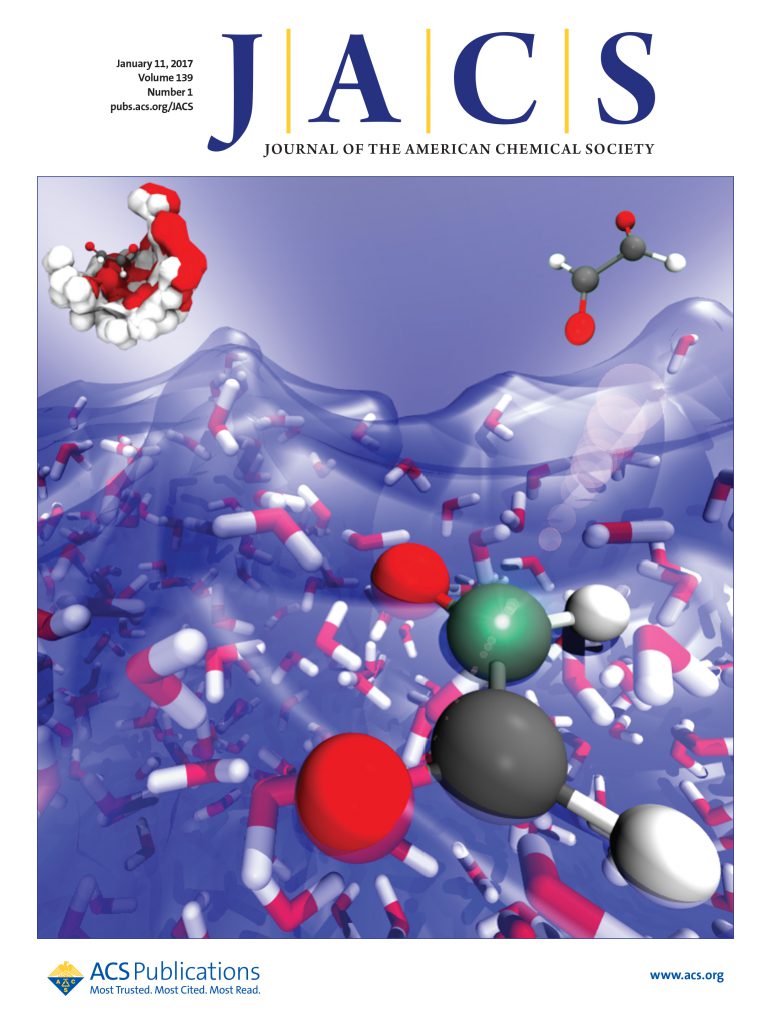用模型配合物重构[Fe]-氢化酶揭示甲基在金属辅助因子中的功能作用。
IF 14.4
1区 化学
Q1 CHEMISTRY, MULTIDISCIPLINARY
引用次数: 0
摘要
虽然[Fe]-氢化酶是一种很有前途的贵金属加氢催化剂的生物替代品,但其生产和基因操作的困难严重阻碍了机理研究和实际应用。半合成[Fe]-加氢酶,由重组的apo酶和合成的FeGP辅因子模拟物组装而成,解决了这些限制,然而早期的半合成[Fe]-加氢酶由于FeGP辅因子模拟物上的吡啶醇配体特征不完全而活性较低。在这里,我们通过设计和表征模型配合物2-4来研究3-和5-甲基取代基在FeGP辅因子吡啶醇配体上的作用。重组研究表明,3-甲基可以提高催化活性(比非甲基化类似物提高35倍)和重组动力学,而5-甲基可以提高氧化稳定性。优化后的变体jHmd-4达到38.5(正向)和33.5 U·mg-1(反向)的比活性,达到天然酶活性的8%,是迄今为止报道的最高半合成体系。这一突破为开发高效的生物加氢催化剂建立了一个可调平台,同时为金属酶工程提供了关键见解。本文章由计算机程序翻译,如有差异,请以英文原文为准。
Reconstitution of [Fe]-Hydrogenase with Model Complexes Reveals Functional Roles of Methyl Groups in the Metallocofactor.
While [Fe]-hydrogenase represents a promising biological alternative to noble-metal hydrogenation catalysts, difficulties in its production and genetic manipulation significantly hinder both mechanistic investigations and practical applications. Semisynthetic [Fe]-hydrogenases, assembled from recombinant apoenzymes and synthetic FeGP cofactor mimics, address these limitations, yet early-generation semisynthetic [Fe]-hydrogenases suffer from low activity due to incomplete pyridinol ligand features on the FeGP cofactor mimics. Here, we investigate the roles of 3- and 5-methyl substituents on the FeGP cofactor's pyridinol ligand by designing and characterizing model complexes 2-4. Reconstitution studies demonstrate that the 3-methyl group boosts catalytic activity (a 35-fold increase over nonmethylated analogs) and reconstitution kinetics, while the 5-methyl group enhances oxidative stability. The optimized variant, jHmd-4, achieves specific activities of 38.5 (forward) and 33.5 U·mg-1 (reverse), reaching 8% of native enzyme activity─the highest reported for semisynthetic systems to date. This breakthrough establishes a tunable platform for developing efficient biohydrogenation catalysts, while providing key insights into metalloenzyme engineering.
求助全文
通过发布文献求助,成功后即可免费获取论文全文。
去求助
来源期刊
CiteScore
24.40
自引率
6.00%
发文量
2398
审稿时长
1.6 months
期刊介绍:
The flagship journal of the American Chemical Society, known as the Journal of the American Chemical Society (JACS), has been a prestigious publication since its establishment in 1879. It holds a preeminent position in the field of chemistry and related interdisciplinary sciences. JACS is committed to disseminating cutting-edge research papers, covering a wide range of topics, and encompasses approximately 19,000 pages of Articles, Communications, and Perspectives annually. With a weekly publication frequency, JACS plays a vital role in advancing the field of chemistry by providing essential research.

 求助内容:
求助内容: 应助结果提醒方式:
应助结果提醒方式:


